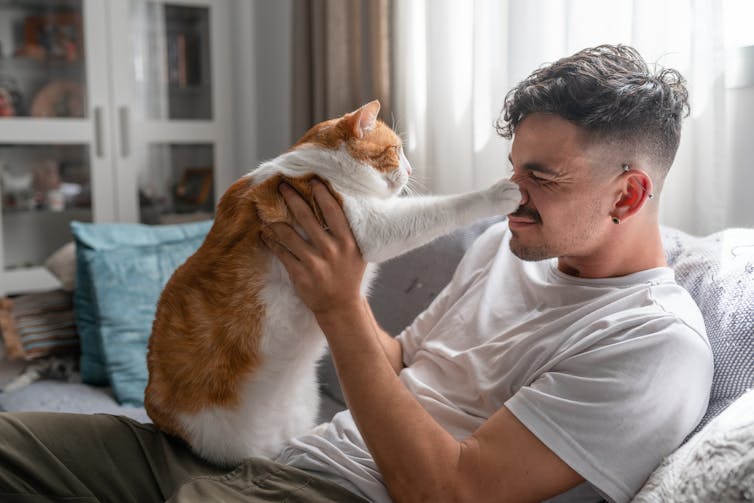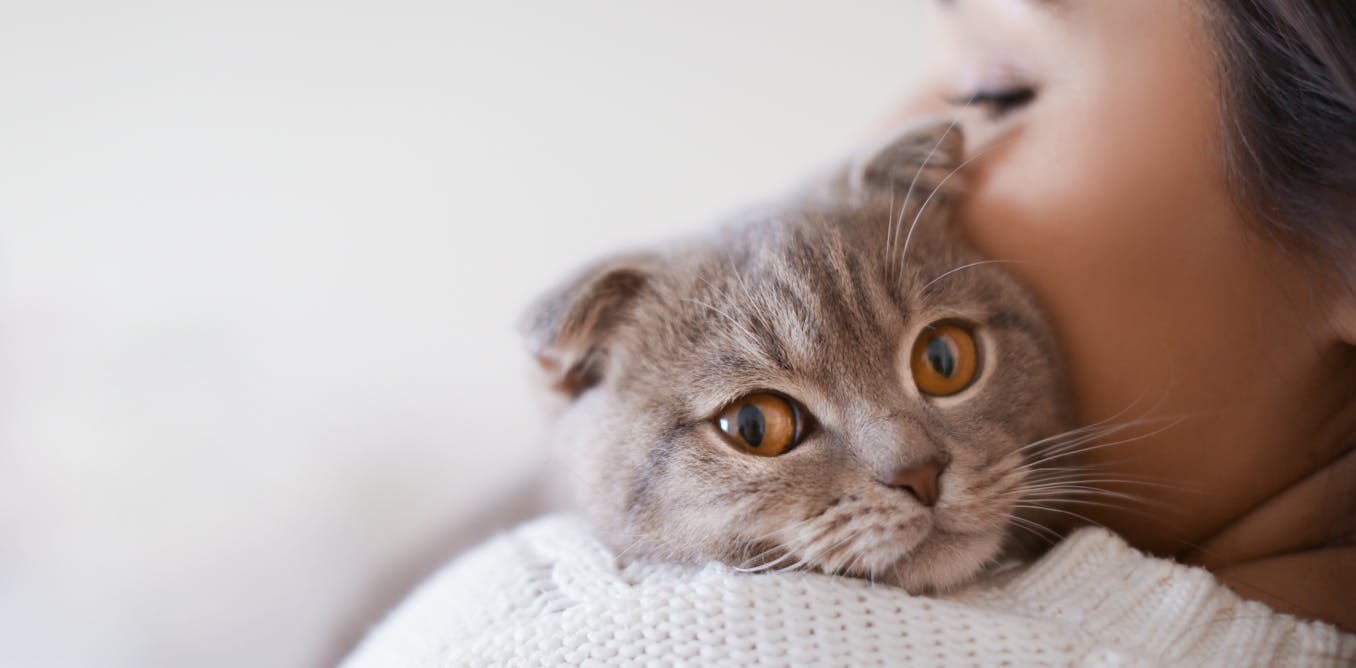[ad_1]
It is a story that goes again 1000’s of years.
Initially, cats had been solitary creatures. This implies they most popular to stay and hunt alone, somewhat than in teams. Most of their social behaviour was restricted to mother-kitten interactions. Outdoors of this relationship, cats not often meow at one another.
Nonetheless, as cats started to stay alongside people, these vocalisations took on new meanings. In some ways, when a cat meows at us, it’s as in the event that they see us as their caregivers, very similar to their feline moms.
Cats in all probability first encountered people roughly 10,000 years in the past, when individuals started establishing everlasting settlements. These settlements attracted rodents, which in flip drew cats in search of prey. The much less fearful and extra adaptable cats thrived, benefiting from a constant meals provide. Over time, these cats developed nearer bonds with people.
Not like canines, which had been bred by people for particular traits, cats basically domesticated themselves. People who may tolerate and talk with people had a survival benefit, resulting in a inhabitants well-suited to dwelling alongside individuals.
To grasp this course of, we will have a look at Russian farmed fox experiments. Starting within the Fifties, Soviet scientist Dmitry Belyaev and his staff selectively bred silver foxes, mating people who had been much less fearful and aggressive towards people.
Over generations, these foxes turned extra docile and pleasant, growing bodily traits much like domesticated canines, similar to floppy ears and curly tails. Their vocalisations modified too, shifting from aggressive “coughs” and “snorts” to extra pleasant “cackles” and “pants”, harking back to human laughter.
These experiments demonstrated that selective breeding for tameness may result in a variety of behavioural and bodily adjustments in animals, reaching in a couple of many years what would normally take 1000’s of years. Although much less apparent than the variations between canines and the ancestral wolf, cats have additionally modified since their days as African wildcats. They now have smaller brains and extra various coat colors, traits frequent amongst many home species.
Cats’ vocal variations
Just like the silver foxes, cats have tailored their vocalisations, albeit over a for much longer time period. Human infants are altricial at start, that means they’re totally depending on their mother and father. This dependency has made us notably attuned to misery calls – ignoring them could be expensive for human survival.

Magui RF/Shutterstock
Cats have altered their vocalisations to faucet into this sensitivity. A 2009 examine by animal behaviour researcher Karen McComb and her staff provides proof of this adaptation. Contributors within the examine listened to 2 forms of purrs. One kind was recorded when cats had been looking for meals (solicitation purr) and one other recorded once they weren’t (non-solicitation purr). Each cat homeowners and non-cat homeowners rated the solicitation purrs as extra pressing and fewer nice.
An acoustic evaluation revealed a high-pitch element in these solicitation purrs, resembling a cry. This hidden cry faucets into our innate sensitivity to misery sounds, making it almost unattainable for us to disregard.
But it surely’s not simply cats which have tailored their vocalisations: now we have too. Once we discuss to infants, we use “motherese”, extra generally often known as “child discuss”, characterised by the next pitch, exaggerated tones and simplified language. This type of speech helps interact infants, taking part in a job of their language improvement.
We’ve prolonged this type of communication to our interactions with pets, often known as pet-directed speech. Current analysis means that cats reply to this type of communication. A 2022 examine by animal behaviour researcher Charlotte de Mouzon and colleagues discovered that cats may distinguish between speech addressed to them and speech addressed to grownup people. This sample of discrimination was notably sturdy when the speech got here from the cats’ homeowners.
Our adoption of pet-directed speech reinforces a bond that mirrors mother-kitten interactions.
Modifications in vocalisations are usually not solely seen in cat-human relationships. In comparison with the ancestral wolf, canines have expanded their barking behaviour to speak extra successfully with people and, simply as with cats, we use pet-directed speech when interacting with canines.
Over time, cats have developed to make use of vocal alerts that resonate with our nurturing instincts. Paired with our use of pet-directed speech, this two-way communication highlights the distinctive relationship we’ve developed with our feline buddies. It appears cats could be the winners on this relationship, adapting to solicit care and a spotlight from us. Nonetheless, plenty of cat homeowners wouldn’t have it some other method.
[ad_2]
